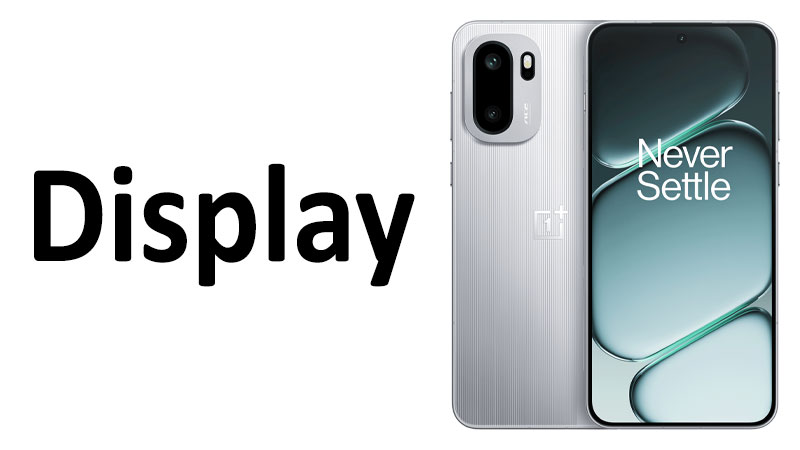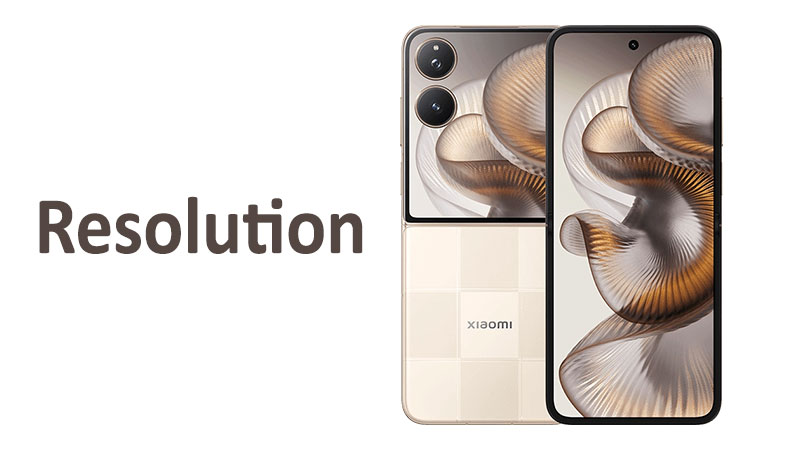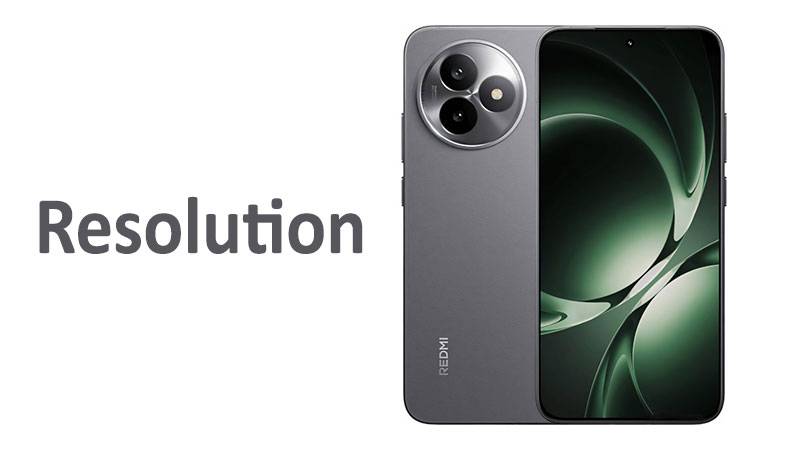The OnePlus Ace 6 display sets a new benchmark for mobile screen technology. Its features blend cutting-edge speed with stunning visual fidelity. This deep dive explores every aspect of the display. We will look at the specifications, resolution, and overall quality. Understanding these elements is vital for any potential buyer or tech enthusiast.
A Comprehensive Examination of the OnePlus Ace 6 Display
The display is the primary way users interact with a smartphone. It affects everything from gaming performance to battery life. The OnePlus Ace 6 screen includes several flagship-level technologies. These advancements ensure a superior viewing experience. The combination of LTPO technology and a high refresh rate is key.
The Foundation: LTPO AMOLED Technology
The OnePlus Ace 6 utilizes an LTPO AMOLED panel. This technology is a significant step forward. LTPO stands for Low-Temperature Polycrystalline Oxide. It is essential for modern high-end displays. This panel type offers superior power efficiency. It achieves this while maintaining a vibrant and crisp image.
AMOLED, or Active-Matrix Organic Light-Emitting Diode, is already known for quality. Each pixel emits its own light. This results in perfect black levels and infinite contrast ratios. Combining this with LTPO provides the best of both worlds. You get stunning visuals and excellent battery conservation. This makes the phone a powerful device for extended use.
Specialized Comparison: LTPO vs. Standard AMOLED
Standard AMOLED displays require more power for variable refresh rates. Older phones often struggled with this balance. The previous model, the OnePlus Ace 5, likely used a standard high-refresh-rate AMOLED. It offered speed but often sacrificed some battery life.
The LTPO panel in the Ace 6 allows for dynamic refresh rate scaling. The screen can drop its refresh rate significantly. It can go down to 1Hz for static content. This ultra-low rate saves substantial energy. When you are reading an e-book, the display sips power. When you start gaming, it immediately ramps up. This flexibility is the main advantage over older, non-LTPO flagships.
Unmatched Fluidity: The 165Hz Refresh Rate
The OnePlus Ace 6 display boasts an extremely high 165Hz refresh rate. This is one of the fastest speeds available on a modern smartphone. The high refresh rate translates directly into incredible motion clarity. Every interaction on the phone feels instantaneous and smooth.
Scrolling through long webpages is fluid and tear-free. Fast-paced games benefit the most from this speed. A higher refresh rate means less motion blur. It provides a distinct competitive edge in mobile gaming. The display updates 165 times every second. This ensures you see the most current frame of the action.
The Role of LTPO in 165Hz Performance
LTPO is critical for managing this high speed efficiently. Without it, sustaining 165Hz would quickly drain the battery. The adaptive technology intelligently manages the power draw. It only uses the maximum refresh rate when the content demands it. For example, a heavy graphics game will trigger the full 165Hz. Watching a 24 frames-per-second movie will utilize a lower, power-saving setting.
Specialized Comparison: 165Hz vs. Competitors
Most flagship smartphones cap their displays at 120Hz. Some gaming-focused phones reach 144Hz. The 165Hz speed of the OnePlus Ace 6 places it among the elite. This difference is subtle but noticeable to experienced users and dedicated gamers. The gap between 120Hz and 165Hz is not as dramatic as 60Hz to 120Hz. Nevertheless, it represents peak performance in mobile screen technology. It is a feature designed for users who demand the absolute fastest response time.
Resolution and Clarity: A High-Density Canvas
The OnePlus Ace 6 features a large 6.83-inch display. This size provides ample screen real estate. It is excellent for media consumption and multitasking. The screen-to-body ratio is impressive at approximately 90.1%. This indicates very thin bezels surrounding the active display area.
The resolution is specified at 1272 x 2800 pixels. This is a high-resolution panel. It sits slightly above the common Full HD+ resolution. It is also a bit less pixel-dense than standard Quad HD+ (1440p) displays. This resolution choice is likely a strategic one. It balances superb clarity with rendering performance and power efficiency.
Pixel Density Analysis: Sharpness for the Human Eye
The resolution results in a pixel density of approximately 450 pixels per inch (ppi). A density of 450 ppi is exceptionally sharp. The human eye struggles to distinguish individual pixels above 300 ppi. Text looks razor-sharp. Images are incredibly detailed. There is no visible pixelation during normal use.
This pixel density ensures a premium visual experience. It rivals the clarity of the best flagship displays on the market. The large screen size combined with this high density makes for a highly immersive viewing experience.
Color and Contrast: 1 Billion Colors and HDR Standards
Color reproduction is a hallmark of AMOLED displays. The OnePlus Ace 6 elevates this with support for 1 Billion colors. This is also known as 10-bit color depth. Standard displays typically show 16.7 million colors (8-bit). The difference in color palette is staggering.
The 10-bit color depth allows for smoother gradients. Color banding, or the visible transition between shades, is virtually eliminated. This is critical when viewing high-quality photography or cinematic content. Color accuracy becomes paramount for professional use and media creation.
Full HDR Suite: Dolby Vision, HDR10+, and HDR Vivid
The display supports a comprehensive suite of High Dynamic Range (HDR) standards. These include HDR10+, Dolby Vision, and HDR Vivid. This broad support ensures compatibility with all major streaming services.
Dolby Vision and HDR10+ are dynamic HDR standards. They use metadata that changes from scene to scene. This optimizes the picture quality on a frame-by-frame basis. It results in spectacular contrast, bright highlights, and detailed shadows. HDR Vivid is a newer standard, often used in certain regions. Its inclusion highlights OnePlus’s commitment to complete global media support. This suite is essential for a true cinematic experience on a mobile device.
Brightness and Outdoor Visibility
Screen brightness is crucial for comfortable viewing. This is especially true when using the phone outdoors in direct sunlight. The OnePlus Ace 6 display offers impressive brightness specifications.
It provides 800 nits of typical brightness (typ). This is sufficient for indoor use and general viewing. More importantly, it features an 1800 nits High Brightness Mode (HBM). HBM is automatically activated in bright outdoor conditions. This peak brightness ensures excellent screen legibility even under harsh sunlight.
Specialized Comparison: Brightness Evolution
Older smartphones often maxed out around 1200 to 1400 nits HBM. The jump to 1800 nits is substantial. It significantly reduces glare and washout. This peak brightness is competitive with the current top-tier flagship displays. It ensures the HDR content truly shines with vibrant highlights and punchy whites. The display manages to be bright without washing out colors.
The Trade-Offs: PWM Dimming and Eye Comfort
While the screen is visually stunning, it employs Pulse Width Modulation (PWM) dimming. PWM is a common method for controlling OLED brightness at low levels. It rapidly flashes the screen to create the illusion of dimness.
For most users, PWM is unnoticeable. However, some sensitive individuals may perceive flickering. This can lead to eye strain or headaches over extended use. The frequency of the PWM is a key factor. High-frequency PWM minimizes this effect. While OnePlus has not detailed the exact frequency, modern flagships typically use a high-frequency method to reduce strain. It is a necessary consideration for users with eye sensitivities.
Durability: Crystal Shield Glass Protection
The OnePlus Ace 6 display is protected by Crystal Shield Glass. This proprietary solution is designed for resilience. It provides enhanced protection against scratches and impacts. The name suggests a focus on clarity and hardness.
Screen durability is a major concern for all smartphone users. The Crystal Shield Glass aims to provide a reliable defense. It protects the large 6.83-inch canvas from everyday wear and tear. It helps maintain the original visual quality over the device’s lifespan.
Specialized Comparison: Crystal Shield vs. Industry Leaders
Major competitors often use established brands like Gorilla Glass Victus or Armor. Crystal Shield Glass is OnePlus’s answer to this market. While the exact chemical composition remains proprietary, it must offer comparable protection. Buyers should research independent drop and scratch tests. Its performance is crucial for long-term satisfaction. The protection ensures the stunning display remains scratch-free and intact.
The Buying Decision: Pros, Cons, and Key Takeaways
The OnePlus Ace 6 display is undoubtedly a technological powerhouse. It is packed with features that appeal to a wide range of users. From avid gamers to movie lovers, the screen offers something for everyone. However, a balanced assessment requires looking at both the strengths and weaknesses.
Pros of the OnePlus Ace 6 Display
The advantages of this display are numerous and significant.
First, the 165Hz refresh rate provides unparalleled smoothness. Gaming and scrolling are incredibly fluid. Second, LTPO technology ensures top-tier power efficiency. The phone intelligently adjusts its refresh rate to save battery life. Third, the peak brightness is excellent. The 1800 nits HBM guarantees visibility outdoors.
Fourth, the color fidelity is exceptional. Support for 1 Billion colors creates realistic and vibrant images. Fifth, the full HDR suite is a major plus. Dolby Vision, HDR10+, and HDR Vivid support future-proofs media consumption. Finally, the high pixel density ensures crystal-clear sharpness. Text and images are rendered with incredible detail.
Cons of the OnePlus Ace 6 Display
A few minor points could be considered drawbacks.
First, the use of PWM dimming might affect sensitive users. While common in OLEDs, some users still prefer DC Dimming. Second, the resolution is non-standard. The 1272 x 2800 pixel resolution is not the common 1440p standard. This difference is negligible in use, but some apps may not be perfectly optimized. Third, Crystal Shield Glass is less recognized than rival protection brands. Its long-term durability profile requires further independent testing.
Key Takeaways for Buyers
If you are considering purchasing the OnePlus Ace 6, the display is a major selling point. It is one of the phone’s most impressive features.
Prioritize your usage: If you are a mobile gamer, the 165Hz rate is a must-have feature. The motion clarity it provides is superior.
Consider media consumption: The full HDR support is fantastic for streaming. Netflix, YouTube, and other platforms will look their absolute best. Dolby Vision content will especially benefit from the high brightness and color depth.
Eye sensitivity: If you have experienced discomfort with other OLED screens, research the PWM frequency before purchasing. This is a personal consideration.
Battery life management: The LTPO panel is a key technology for battery longevity. It ensures the high refresh rate does not compromise all-day power. You get both performance and efficiency. The display is a clear investment in visual performance and efficiency.
Conclusion
The OnePlus Ace 6 display is a truly comprehensive and high-performing component. It successfully merges the best available display technologies into one single package. The LTPO AMOLED panel provides a vibrant, contrast-rich, and power-efficient foundation. The flagship-level 165Hz refresh rate ensures butter-smooth motion and responsiveness.
The combination of 1 Billion colors and the full HDR suite is essential for media enthusiasts. It guarantees cinematic quality for all videos and movies. Furthermore, the 1800 nits peak brightness ensures perfect visibility in any environment. This is a powerful feature for outdoor use.
While the presence of PWM dimming is a factor for some, the overall quality is undeniable. The high resolution and 450 ppi density deliver excellent sharpness. The Crystal Shield Glass provides necessary physical protection. The OnePlus Ace 6 display competes with, and in some areas surpasses, the best mobile screens available today. This display alone makes the OnePlus Ace 6 a compelling option for demanding users. It provides a phenomenal, future-proof visual experience.
FAQ
What type of display technology does the OnePlus Ace 6 use?
The OnePlus Ace 6 uses a sophisticated LTPO AMOLED panel. This technology allows for dynamic refresh rate adjustments. It significantly improves power efficiency while offering superior visual quality.
What is the peak brightness of the Ace 6 display?
The peak brightness reaches 1800 nits in High Brightness Mode (HBM). This ensures the screen remains clearly visible even when viewed in direct sunlight outdoors.
Does the OnePlus Ace 6 support Dolby Vision?
Yes, the OnePlus Ace 6 display supports a complete range of HDR standards. This includes Dolby Vision, HDR10+, and the HDR Vivid format. This ensures optimal viewing of premium streaming content.
What is the refresh rate of the OnePlus Ace 6 screen?
The phone features an ultra-fast 165Hz adaptive refresh rate. This speed offers extremely fluid scrolling and an advantage for competitive mobile gaming due to reduced motion blur.
What screen protection is used on the Ace 6?
The display is protected by a proprietary material called Crystal Shield Glass. This glass is designed to offer robust resistance against both scratches and accidental impacts.



